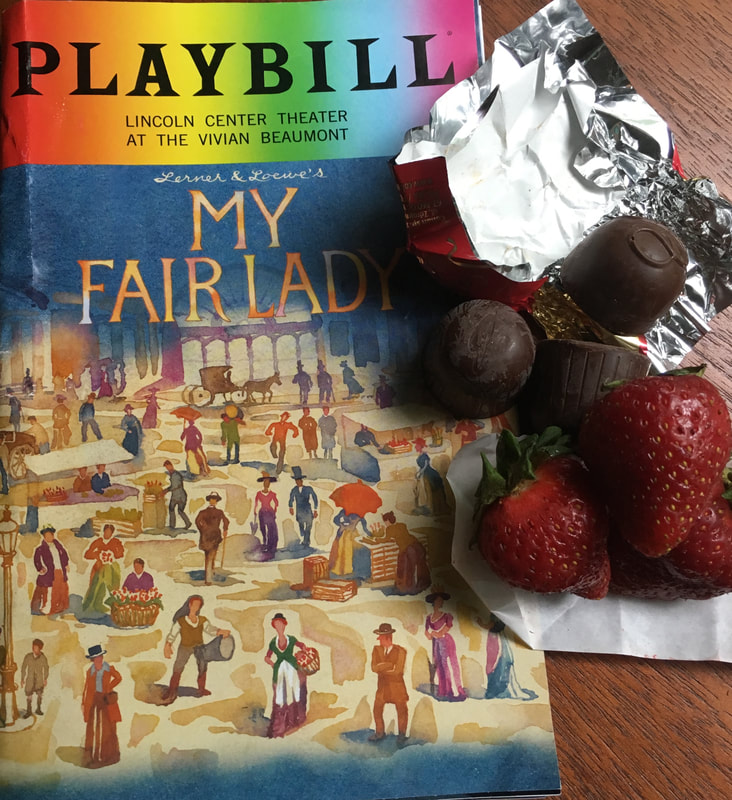|
George Bernard Shaw’s Pygmalion was once required summer reading for high school students. I know this for a fact because it was Shaw, not Rex Harrison, who introduced me to the guttersnipe with a penchant for lots of chocolate and strawberry tarts. Eliza Doolittle, Professor Henry Higgins, and Colonel Pickering were tucked between the pages of a biting yet witty social commentary penned by Shaw in 1912. I was in no hurry to peel back the cover of the slightly worn Penguin paperback edition buried on my desk. Less desirable and begging to be completed before Labor Day, was the accompanying worksheet peppered with multiple choice and essay questions. The tale of a wordsmith intent on transforming a Cockney flower seller into a duchess was not nearly as interesting as Seventeen magazine’s back-to-school issue.
Shaw’s pointed observations required the reader to ponder socio-economic inequality. The topics for consideration in Pygmalion included the power struggle associated with food, the broad language barrier separating gender and class, and a hint of the burgeoning suffragette movement. Language is front and center in Shaw’s play, occasionally inclusive, most times divisive. Pygmalion was the non-Cinderella version of the sweeping cinematic My Fair Lady. I had seen the 1964 film adaptation on the big screen, juggling a Coca-Cola in one hand and a noisy box of Raisinettes in the other. Starring the talking-not-singing Rex Harrison, and the no-singing-allowed Audrey Hepburn, the movie musical was visually stunning, the repetitive soundtrack memorable. The film garnered 8 Academy awards in 1965, including Best Picture. Those who attempted to watch the movie in lieu of reading Pygmalion did not fare so well on the summer worksheet, or so I’ve been told. The current Lincoln Center Theater revival of My Fair Lady has earned 10 Tony Award nominations proving that the story still resonates with contemporary audiences. Though Eliza still has a fondness for 60% dark chocolate and the occasional organic strawberry tart, the former flower girl is no shrinking violet. Despite the restrictions imposed by her social status, Eliza finds her feminist voice. Henry Higgins continues to serve as Shaw’s spokesman, asking those in attendance at the Vivian Beaumont to consider the same social inequalities broached by the playwright in Pygmalion. Shaw’s story may be more than one hundred years old, but my guess is it will find its way back to the top of many required reading lists for the summer. Right about now seems to be the perfect time to pore over Shaw’s socially charged commentary. You might want to enhance the experience by arming yourself with a few pints of all-too-short-a-season local strawberries. A little dark chocolate would be loverly, too.
2 Comments
My Mother had the soundtrack and it was the only album she played outside of classical music when cleaning the house.I didn't see the play until a teenager after seeing the movie. I remember feeling very adult discussing the pros and cons of each medium. I do not recall if the book was ever on my summer reading list but it should have been that is for sure!
Reply
6/5/2018 11:49:42 am
I love My Fair Lady and also have an interest in the history of the era during the time Pygmalion was written. In saying Eliza prefers 60% cacao is this a modernized version? Your chocolate and strawberries are making me drool. LOL
Reply
Leave a Reply. |
Archives
July 2024
Ellen GrayProfessional Pie-isms & Seasonal Sarcasm Categories |


 RSS Feed
RSS Feed